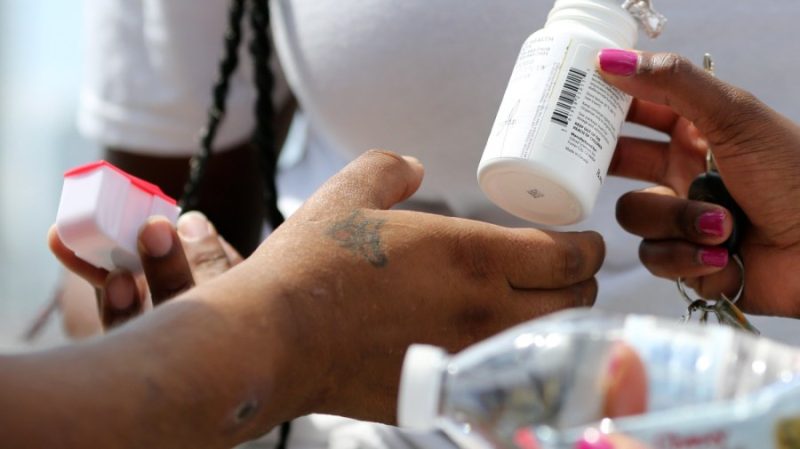In drastically cutting down its public health workforce, the Trump administration is potentially undoing decades of work combatting the HIV epidemic and delaying upcoming advances.
When Health and Human Services (HHS) Secretary Robert F. Kennedy Jr. announced plans to reduce his department’s staff by 20 percent, several divisions within the Centers for Disease Control and Prevention (CDC) were effectively eliminated, with programs focused on HIV and AIDS hit especially hard.
The entire staff at the Office of Infectious Diseases & HIV Policy (OIDP) was eliminated and other divisions dedicated to HIV were severely cut down. Both the National Center for HIV, Viral Hepatitis, STD, and Tuberculosis Prevention (NCHHSTP) as well as the Global Health Center Division of Global HIV & TB lost about a fourth of their staff.
Within the CDC’s division of HIV prevention, five branches were eliminated completely, including the research, surveillance and prevention communication branches.
Top staffers including Jonathan Mermin, director of the NCHHSTP, and Jeanne Marrazzo, director of the National Institute of Allergy and Infectious Diseases (NIAID), were both reassigned to the Indian Health Service.
The United States spends around $28 billion on its domestic response to the HIV epidemic, which amounts to roughly one percent of HHS’s FY 2025 budget of $2.61 trillion.
“I don’t know why HIV has been singled out,” Carl Schmid, executive director of the HIV+Hepatitis Policy Institute, told The Hill.
One of the teams that was let go oversaw guidelines for HIV PrEP. Schmid worries their absence could impact the implementation of a new investigational PrEP medication that, if approved, would only need to be administered twice a year.
Along with getting rid of entire branches crucial to the HIV response, Schmid noted hundreds of research grants have been halted.
Many of these grants were likely stopped due to the administration’s edict to get rid of diversity, equity and inclusion (DEI) within the federal agencies. Some of the cut funding went towards HIV research focusing on trans, Black and Latino individuals, groups who are disproportionately impacted by the epidemic.
“I don’t understand what ‘No DEI’ means. Because everything that we do is based on disparities — you know, whether you’re Black, you’re gay, you’re trans — and also it could be geographic in certain areas. I mean, that’s how you address an infectious disease. You go where the epidemic is,” said Schmid. “If you ignore them, it’s just going to get worse.”
Prior to becoming HHS secretary, Kennedy publicly questioned several aspects of the HIV epidemic, including whether the virus causes AIDS. He has promoted the idea that AIDS could be caused by the recreational drug poppers, popular in the gay community.
Kennedy has previously claimed that former longtime NIAID Director Anthony Fauci sabotaged effective AIDS treatments also cast doubt on the efficacy of azidothymidine (AZT), the first ever drug approved by the Food and Drug Administration to treat HIV and AIDS
When left untreated, HIV can lead to AIDS, a fact acknowledged by both the CDC and the World Health Organization.
Outside of conspiracy theories, Schmid sees echoes in the current administration of how the HIV epidemic was treated in the past, when government officials moralized the behavior of affected people and words like “gay” and “condom” couldn’t be uttered in meetings. Now, terms like “trans” and “DEI” are being censored.
The apparent kneecapping of the federal response to HIV marks a contrast to President Trump’s first term, when he launched an initiative of ending the HIV epidemic by 2030.
“I think there’s some new people, you know, and I don’t think they’re reflective of where the country is,” Schmid said of current Trump administration and its actions on the HIV epidemic. “It doesn’t seem like it’s very Trumpian either.”
Changes to the HIV response will also affect efforts in combatting other sexually transmitted infections (STI).
“The HIV and STI response in the United States is inextricably linked,” said David C. Harvey, executive director of the National Coalition of STD Directors.
“What happens to one program impacts the other program. What impacts these two distinct issues also impacts our larger ability to deal with infectious diseases in the U.S.” Harvey said.
According to Harvey, the federal government provides the majority of STI funding for some state health departments, meaning a drastic reduction at the federal level would be “devastating” for them, particularly for “rural, low-income southern states.”
Two branches of the CDC’s STI division were also eliminated in Kennedy’s culling: the STD Laboratory Reference Branch and the Disease Intervention and Response Branch. The cutting of these branches, coupled with the elimination of the OIDP and the HIV branches, means losing “many, many years of scientific and administrative expertise,” according to Harvey.
The rate of STIs in the U.S. has been on the rise over the past two decades, with a 90 percent increase since 2004. It’s only in recent years that the rate of STI infections has seemed to level off. From 2022 to 2023 the number of STIs in the U.S. fell by 1.8 percent.
Experts said defunding and eliminating these divisions runs counter to Kennedy’s stated plans to focus on chronic illness over infectious disease. HIV, while manageable with today’s medical advancements, is still currently a lifelong condition and other STIs can cause chronic illnesses.
“HIV and STIs squarely fall within the framework of chronic disease,” said Harvey. “And we can do much more in this country to have an effective response to both prevent these diseases from ever happening and then if they do, provide universal access to testing and treatment.”





